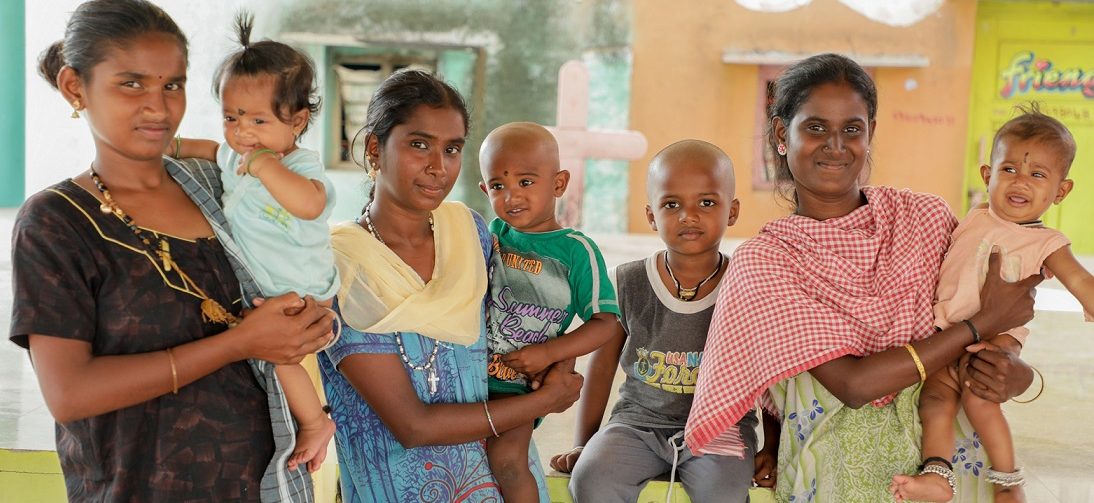
Click here to download the PDF
India’s policy framework covers most evidence-based interventions, which are delivered through large-scale national programs in place (Integrated Child Development Scheme and National Rural Health Mission). Data systems and their usage are of great significance in the process of tracking malnutrition and improving programs. The key elements of a data system for nutrition include (1) data sources such as population-based surveys, administrative data and implementation research, (2) data use, and (3) data stewardship across a data value chain. The nutrition data value chain includes the prioritization of indicators, data collection, curation, analysis, and translation to policy and program recommendations and evidence-based decisions. Finding the right fit for nutrition information systems is important and must include neither too little nor too much data; finding the data system that is the right fit for multiple decision makers is a big challenge.
In this Report on “Tracking India’s Progress on Addressing Malnutrition and Enhancing the Use of Data to Improve Programs”, developed jointly by the International Food Policy Research Institute, NITI Aayog, and IDinsight, we aim to cover issues that need to be considered in the strengthening of efforts to improve the availability and use of data generated through the work of POSHAN Abhiyaan, India’s National Nutrition Mission. POSHAN Abhiyaan’s mission-mode approach provides an impetus to strengthen not only the implementation but also the monitoring and measurement of progress. The report aims to provide guidance for national-, state-, and district-level government officials and stakeholders regarding the use of data to track progress on nutrition interventions, immediate and underlying determinants, and outcomes.
To improve nutrition monitoring and strengthen data use, it is useful to ask and address the following questions in the context of India’s nutrition programs:
- What types of indicators should be used, and for what purpose?
- What types of data sources can be used?
- With what frequency should progress on different indicator domains be assessed?
This report proposes a comprehensive framework of indicators that are based on relevant nutrition conceptual frameworks, the POSHAN Abhiyaan administrative framework, and a theory of change for POSHAN Abhiyaan. It examines the availability of data across a range of interventions in the POSHAN Abhiyaan framework, including population-based surveys and administrative data systems; it then makes recommendations for the improvement of data availability and use.
Our key findings are:
- In India, data on intervention coverage, determinants, and outcomes are available from both population-based household surveys and administrative data systems, which can be leveraged to monitor progress and to inform evidence-based decisions and actions.
- Data can and should be used for tracking progress, reporting, assessing impact, strategy, and program refinement.
- Data on program inputs are primarily available from a range of dashboards and monitoring systems but need consolidation and validation.
- Data on intervention coverage varies by life-stage and type of intervention. The availability of data on the coverage of interventions across life stages are:
- For adolescents, coverage data is scarce both in surveys and administrative systems.
- For pregnancy, multiple data sources are available on antenatal care, but gaps exist for nutrition interventions such as calcium supplementation, counseling, and maternity benefits.
- For delivery and postnatal care, data is available on institutional deliveries and postnatal care but is limited for kangaroo mother care and breastfeeding counseling.
- Data is very limited for newborn care interventions. For early childhood, 9 of 13 interventions are available from different data sources.
- Data on immediate determinants are available from diverse sources but limited data is available on nutrition-related behaviors.
- Data on underlying determinants are stronger and better measured in surveys than in administrative data.
- Outcome indicators are covered in most surveys, and the National Family Health Surveys are a strong data system to track progress on all outcome indicators, except anemia among adolescents.
For a brief version of the report, you may access our Policy Note on “Tracking India’s progress on addressing malnutrition: What will it take?”.


